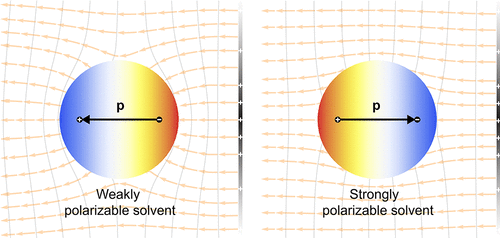当前位置:
X-MOL 学术
›
J. Chem. Theory Comput.
›
论文详情
Our official English website, www.x-mol.net, welcomes your
feedback! (Note: you will need to create a separate account there.)
Electrostatic Self-Assembly: Understanding the Significance of the Solvent
Journal of Chemical Theory and Computation ( IF 5.7 ) Pub Date : 2018-01-03 00:00:00 , DOI: 10.1021/acs.jctc.7b00647 Eric B. Lindgren 1 , Ivan N. Derbenev 1, 2 , Armik Khachatourian 3 , Ho-Kei Chan 4 , Anthony J. Stace 1 , Elena Besley 1
Journal of Chemical Theory and Computation ( IF 5.7 ) Pub Date : 2018-01-03 00:00:00 , DOI: 10.1021/acs.jctc.7b00647 Eric B. Lindgren 1 , Ivan N. Derbenev 1, 2 , Armik Khachatourian 3 , Ho-Kei Chan 4 , Anthony J. Stace 1 , Elena Besley 1
Affiliation

|
The electrostatic deposition of particles has become a very effective route to the assembly of many nanoscale materials. However, fundamental limitations to the process are presented by the choice of solvent, which can either suppress or promote self-assembly depending on specific combinations of nanoparticle/surface/solvent properties. A new development in the theory of electrostatic interactions between polarizable objects provides insight into the effect a solvent can have on electrostatic self-assembly. Critical to assembly is the requirement for a minimum charge on a surface of an object, below which a solvent can suppress electrostatic attraction. Examples drawn from the literature are used to illustrate how switches in behavior are mediated by the solvent; these in turn provide a fundamental understanding of electrostatic particle-surface interactions applicable to many areas of materials science and nanotechnology.
中文翻译:

静电自组装:了解溶剂的重要性
粒子的静电沉积已成为许多纳米级材料组装的非常有效的途径。然而,该方法的基本局限性在于溶剂的选择,取决于纳米颗粒/表面/溶剂性质的特定组合,其可以抑制或促进自组装。可极化物体之间的静电相互作用理论的新发展提供了对溶剂可以对静电自组装产生影响的见解。对于组装至关重要的是,要求在物体表面上具有最小电荷,在此之下,溶剂可以抑制静电吸引。从文献中得出的例子用来说明溶剂如何改变行为。
更新日期:2018-01-03
中文翻译:

静电自组装:了解溶剂的重要性
粒子的静电沉积已成为许多纳米级材料组装的非常有效的途径。然而,该方法的基本局限性在于溶剂的选择,取决于纳米颗粒/表面/溶剂性质的特定组合,其可以抑制或促进自组装。可极化物体之间的静电相互作用理论的新发展提供了对溶剂可以对静电自组装产生影响的见解。对于组装至关重要的是,要求在物体表面上具有最小电荷,在此之下,溶剂可以抑制静电吸引。从文献中得出的例子用来说明溶剂如何改变行为。











































 京公网安备 11010802027423号
京公网安备 11010802027423号